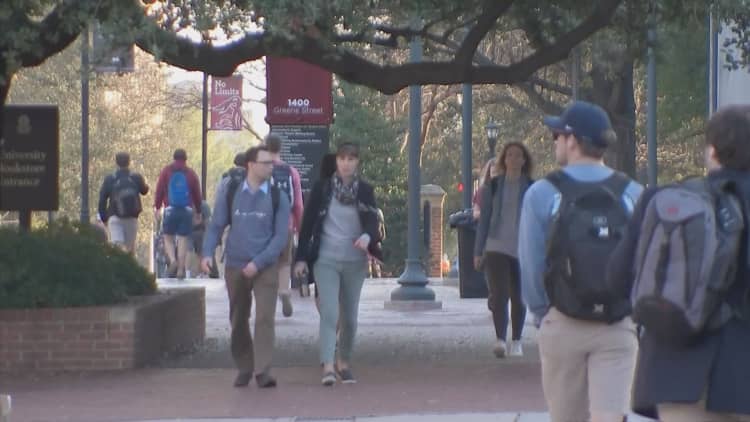
"Free tuition" seems like an unfulfilled campaign promise, one that was once championed by two former Democratic presidential candidates, Vermont Senator Bernie Sanders and former Secretary of State Hillary Clinton.
Yet just this month, Governor Andrew Cuomo (D-NY) pushed that idea a step closer to reality, launching a new plan that would pay college tuition costs for in-state students at both 2 year and 4 year state universities. This week, legislators began debating the cost of a plan Cuomo says will cost $163 million.
The governor's office estimates that while one million families will be eligible, the number of students receiving free tuition by 2019 will be about 200,000.
Currently, only two states, Tennessee and Oregon now offer free tuition, but their programs are only for two-year community colleges, rather than four year institutions.
If it passes, the "Excelsior Scholarship" could start this fall. Initially, students with family income below $100,000 would be eligible. That number would increase to $110,000 next year, and $125,000 in 2019.
In an interview with CNBC's "On The Money", Sara Goldrick-Rab, an education and sociology professor at Temple University, said this program could help make college more affordable for students across income levels.
"I do think this plan will help and one reason certainly is that the middle class would finally would get some financial assistance they so desperately need," Goldrick-Rab added.
Yet Beth Akers, Manhattan Institute Senior Fellow disagreed, citing unintended consequences. Critics of the plan, primarily conservative economists, argue that free college initiatives often hit the taxpayer in the pocket.
A 2016 analysis of Sanders' tax plan estimated that a nationwide plan would cost a budget-busting $70 billion.
"I really have one big complaint about Cuomo's proposal and it is largely regressive. Free college proposals in general tend to benefit more well off households, [and] in particular this one is even worse in the way it's designed," she said.
Akers said that for low income students, it's not just tuition, but the other "costs of attending college that creates a barrier."
The plan would cover the $6,470 yearly cost of tuition at 4 year state schools, and $4,350 at 2 year programs. Still, it does nothing to cover room and board, books, fees and other college costs beyond tuition.
Akers, co-author of the book "Game of Loans, The Rhetoric and Reality of Student Debt", told CNBC that student aid "should be targeted toward these lowest income individuals rather than broadly delivered through a free college regime."
However, Goldrick-Rab, the author of her own book, "Paying the Price, College Costs, Financial Aid, and the Betrayal of the American Dream" believes that low-income students would in fact emerge as the winners under a free college plan.
"The main reason, while there is existing financial aid available to them, many of them never come to college to receive it in the first place," she said.
"What a lot of this plan is really about is a strong, simple message you need to come to college in New York State and we will make it tuition free," Goldrick-Rab added.
"That's going to bring in a lot of people who grew up without money and need to know for sure what they're going to get before they actually enroll. That's going to be a huge benefit to them," she added.
On the Money airs on CNBC Saturday at 5:30 am ET, or check listings for air times in local markets.



